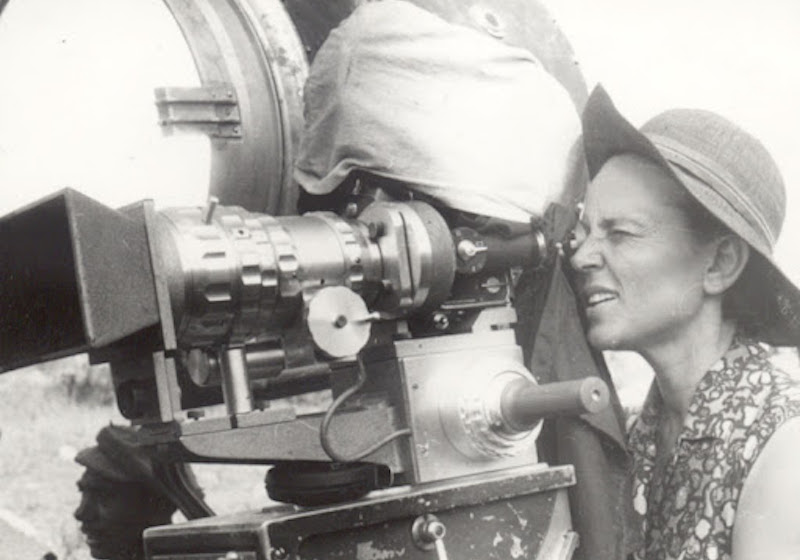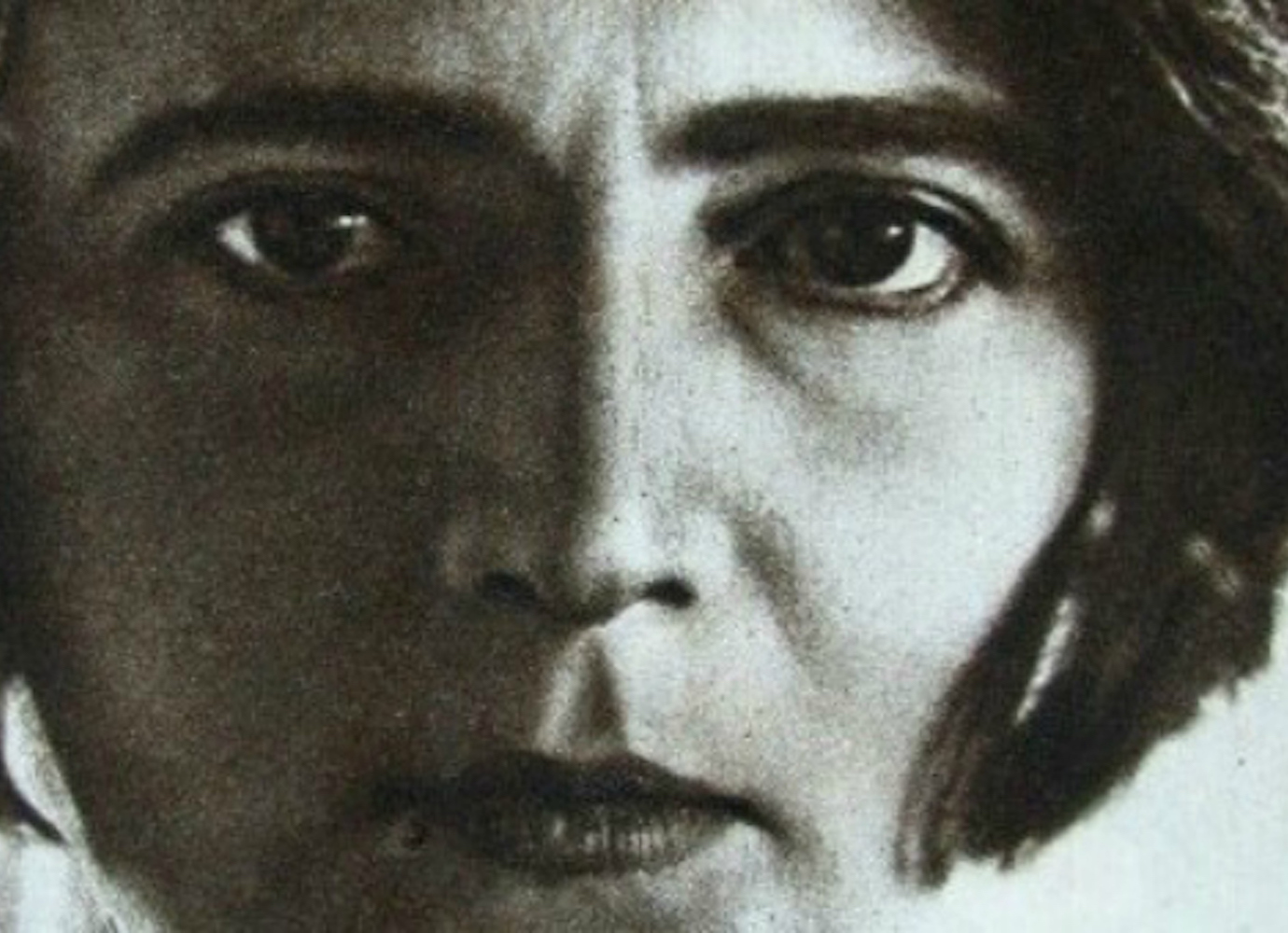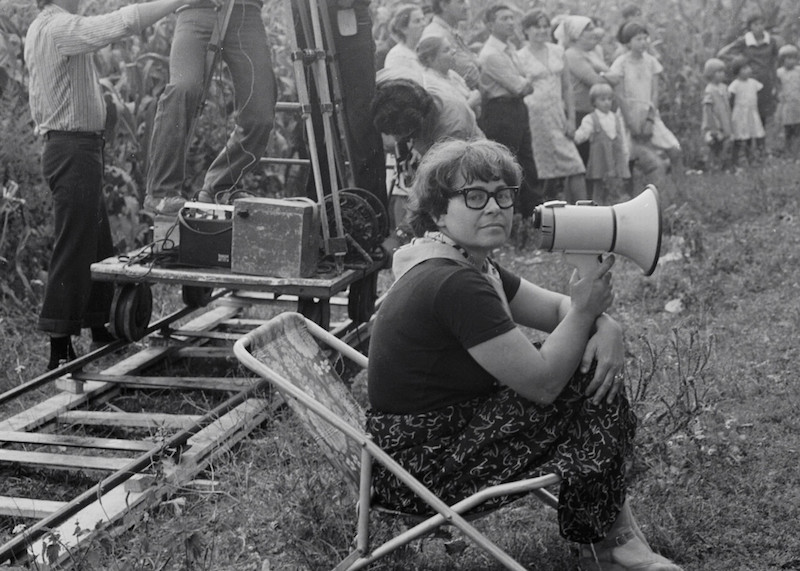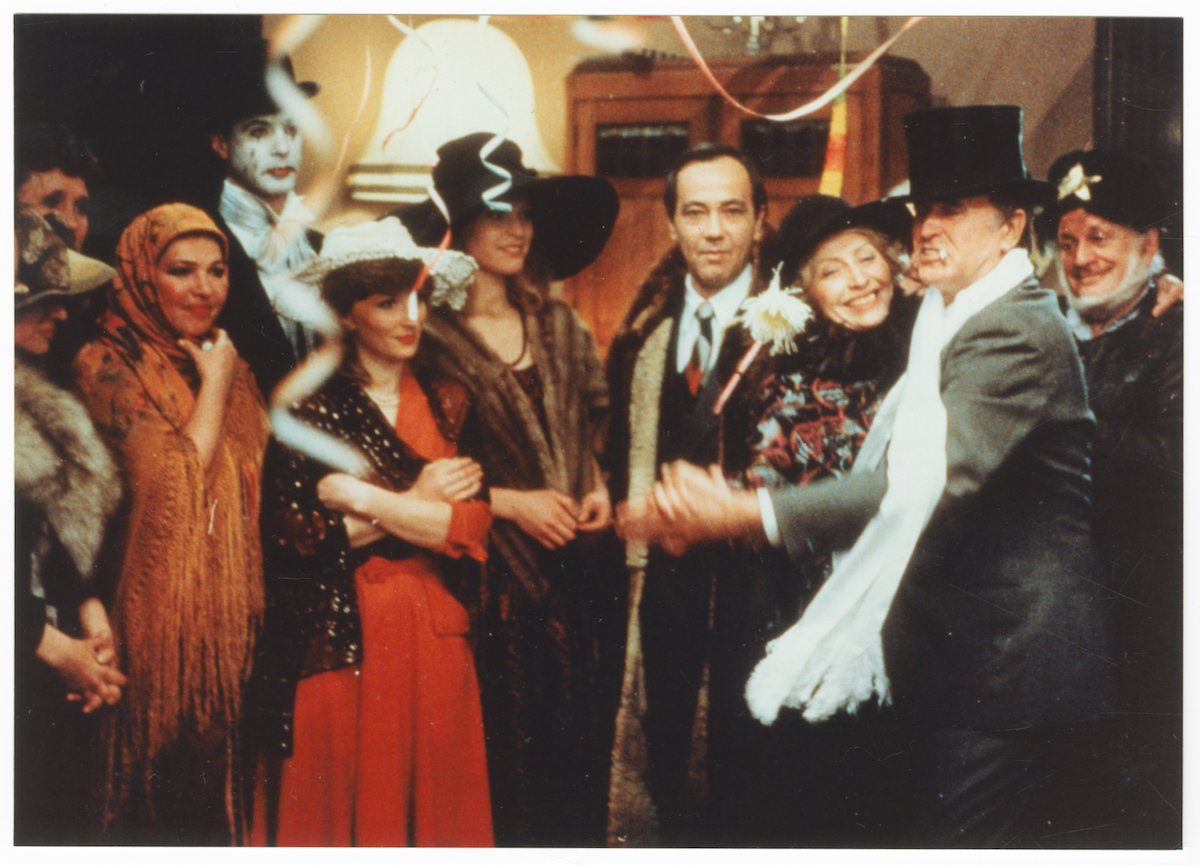Behind the surreal, satirical lens of Binka Zhelyazkova, Bulgaria’s prolific female director

In August 1967, one of Bulgaria’s most promising filmmakers, Binka Zhelyazkova, was scheduled to present her highly anticipated satire, The Tied-Up Balloon, at the Venice International Film Festival. But the socialist Bulgarian authorities pulled the film from the schedule at the last moment, choosing to incur a hefty fine rather than support the defiant yet brilliant director.
As the Venice Film Festival launches its 78th edition, The Calvert Journal looks back on Bulgaria’s first female fiction filmmaker and a lifetime of work that went beyond the party line — addressing the scission between the socialist state and the communist ideal, as seen and lived through her earnest protagonists.
A Revolutionary (and a) Filmmaker
Binka Zhelyazkova was born in Svilengrad, a border town in southern Bulgaria, in 1923. She had already moved to the Bulgarian capital, Sofia, to study filmmaking in 1944, when the Red Army entered the country, prompting communist partisans to launch a coup d’état and end Bulgaria’s monarchic rule.
Even though she joined the Labour Youth Union at the age of 16, Zhelyazkova’s strong allegiance to the communist party did not grant her a favoured position within Bulgarian filmmaking circles. In her working years, between 1951 and 1982, Zhelyazkova was expected to abide by the rules set by an increasingly restrictive State Cinematography.
As she became disenchanted with the reality of state socialism, its multi-layered bureaucracy, and particularly its restrictive attitude towards the arts, Zhelyazkova increasingly used her own, formalistic approach to film to
By the time she released her first feature film, Life Flows Quietly By (aka Partisans) (1957), co-directed with her husband, the screenwriter Hristo Ganev, Zhelyazkova was seen as a thorn in the side of the regime.
Life Flows Quietly By tells the story of two partisan comrades who drift apart after the Bulgarian monarchy is toppled. While one of them benefits from political opportunism, the other remains devoted to the communist ideal, and is repulsed by the burgeoning personality cult of Bulgaria’s new socialist leaders.
The result was far from the picturesque reflection of socialist ideals required by the government’s state-set directives. Officials hungered for films without conflict, where relationships were shrouded in comradely dignity and ultimate obedience. Needless to say, Zhelyazkova was more curious to explore human doubt and vulnerability, casting her fickle female protagonists as the one beacon of hope for a hapless generation. Worst of all, the film seemed to side with the character who disapproved of the Bulgarian government’s current iteration of socialism. As a result, the film was systematically lambasted and censored. It was only shown to wider audiences as late as 1988.
A still from Binka Zhelyazkova's The Swimming Pool (1977). Image: Bulgarian National Film Archive
Up close: The Tied-Up Balloon (1967)
Zhelyazkova’s most-celebrated film, The Tied-up Balloon, offers its own allegory of totalitarianism, wrapped in potent symbolism.
The plot follows the inhabitants of a small village trying to remove a loose army barrage balloon that has become stuck over their land. Over the course of twelve hours, they distractedly sway from one course of action to the other, as all the while the balloon overhead surveys and comments on their frantic efforts from above. Bulgarian film scholars have compared the film’s style with the magic realism of Emir Kusturica, or with Francois Truffaut’s parable storytelling. The film’s formal rigour takes cues from Buñuel and other surrealist works, as the balloon’s omnipresent voice announces that ‘official’ time will soon be altered to fit “European standards”, and, that roosters will become the only “pure race”.
On the ground meanwhile, the balloon ultimately embodies the fantasies, desires and fears of the villagers who cannot help but project their own ideas about surveillance, control, and freedom onto the giant inflatable. Some attempt to either take down the “intruder” balloon, while others admire its free-floating existence.
A still from The Tied-Up Balloon (1967). Image: Bulgarian National Film Archive
The film’s narrative is never explicit: instead, its reliance on political metaphors entwines with a peripheral figure of a mute girl. Dressed in white, the young woman finds her roads to freedom continuously denied — in parallel with the army balloon, whose freedom of movement has also been taken away.
It took Zhelyazkova more than five years to make The Tied-Up Balloon, navigating the political climate, a lack of funding, and repeated refusals for her films to be screened after her previous two works.
But upon its premiere, the The Tied-Up Balloon was shown for a mere few days before screenings were halted. The authorities disliked how villagers in the film were shown as “politically primitive”. Rumour has it that a zealous party official took The Tied-Up Balloon to Bulgaria’s communist leader, Todor Zhivkov — informing him that a donkey featured in the film was a stand-in for the socialist ruler himself. Notoriously tetchy, Zhivkov apparently issued a decree that suppressed the film. Reels were dragged back from Montreal’s EXPO 67, where its US and Western Europe distribution rights had just been acquired. The film was pulled from the 28th edition of the Venice Film Festival. Meanwhile, in Bulgaria, cultural organisations were informed that Zhelyazkova and her husband were dissidents, and that their works were detrimental to the minds of the people. The Tied-Up Balloon, was shelved for another 22 years.
Zhelyazkova’s career was placed in limbo — yet even though her position was compromised, she never stopped making films, despite the many logistical difficulties that the government placed in her path. When The Tied-Up Balloon was finally permitted to premiere at the 1989 Berlinale, Zhelyazkova’s was asked if she, like many filmmakers, from formerly socialist nations, would follow up her work with a feature on perestroika. She answered: “I’ve already made my perestroika film — 22 years ago.”
A still from Binka Zhelyazkova's We Were Young Still (1961). Image: Bulgarian National Film Archive
Body of Work
All in all, more than half of Zhelyazkova’s seven feature films were banned from public viewing in socialist Bulgaria: Life Flows Quietly By, The Tied-Up Balloon, and The Big Night Bathe (1980), as well as two documentaries, The Bright and the Dark Side of Things (1982) and Sleep, My Baby (1982), both of which were about women living in state prisons. Yet Zhelyazkova never ceased to work in both narrative and nonfiction films, in spite of the hindrances she faced.
Abounding in characters who are either actual fugitives or prisoners of the soul, Zhelyazkova’s films don’t make the simple mistake of equating state oppression with psychological torment, but rather open up space for them both to coexist and even meld together. It is her firm stand on the ethics of togetherness along the party lines, in spite of an oppressive regime that exemplifies the ambivalent reality of Bulgarian state socialism.
Luckily, Zhelyazkova was never fully ostracised. Oddly enough, in the 1960s, when her working conditions were still being continuously impeded, Zhelyazkova received one the highest state honour awards given by the People’s Republic of Bulgaria, for her contributions to the field of art and culture.And despite obstacles at home, Zhelyazkova was still able to receive recognition for her work abroad. In 1961, her film We Were Young won the main prize at the Moscow Film Festival, a success which saw Zhelyazkova given the Order of Georgi Dimitrov bacm home. The director was
A still from Binka Zhelyazkova's We Were Young Still (1961). Image: Bulgarian National Film Archive
Legacy
Mass repression ultimately meant that Binka Zhelyazkova’s works have remained mostly unknown to cinema scholars. US-based Bulgarian documentarian, Elka Nikolova, made a biography called Binka To Tell a Story in Silence in 2007. In the same year, Zhelyazkova and her husband Hristo Ganev received a special prize inaugurated by the Ministry for Culture in honour of the pair’s overall contributions to Bulgarian cinema. Nevertheless, her films remain difficult to find and are rarely screened. Both surviving film reels and digitally ripped copies are in dire condition. In March 2021, a digitally remastered and restored copy of The Tied-Up Balloon was finally screened for Bulgarian audiences. A restoration of her 1961 film We Were Young was shown to audiences in Bologna at the 2021 Cinema Ritrovato film festival. Zhelyazkova herself passed away in Sofia in 2011.
Cinephiles, meanwhile, continue to champion Zhelyazkova’s works. Mark Cousins’s 8-hour anthology Women Make Film opens up with a close reading of a scene from Zhelyazkova’s We Were Young. Narrated by Tilda Swinton’s soothing voice, the documentary calls the director “almost unknown” — but also “wildly imaginative”. It was this quality that ultimately defined Zhelyazkova: fuelled by a restrictive Soviet regime that placed endless limitations on artists, it is her inventiveness which eventually shone through to the world.
This article is part of our series Women, Recollected, an ongoing project shining a light on the forgotten women pioneers of 20th century culture.


